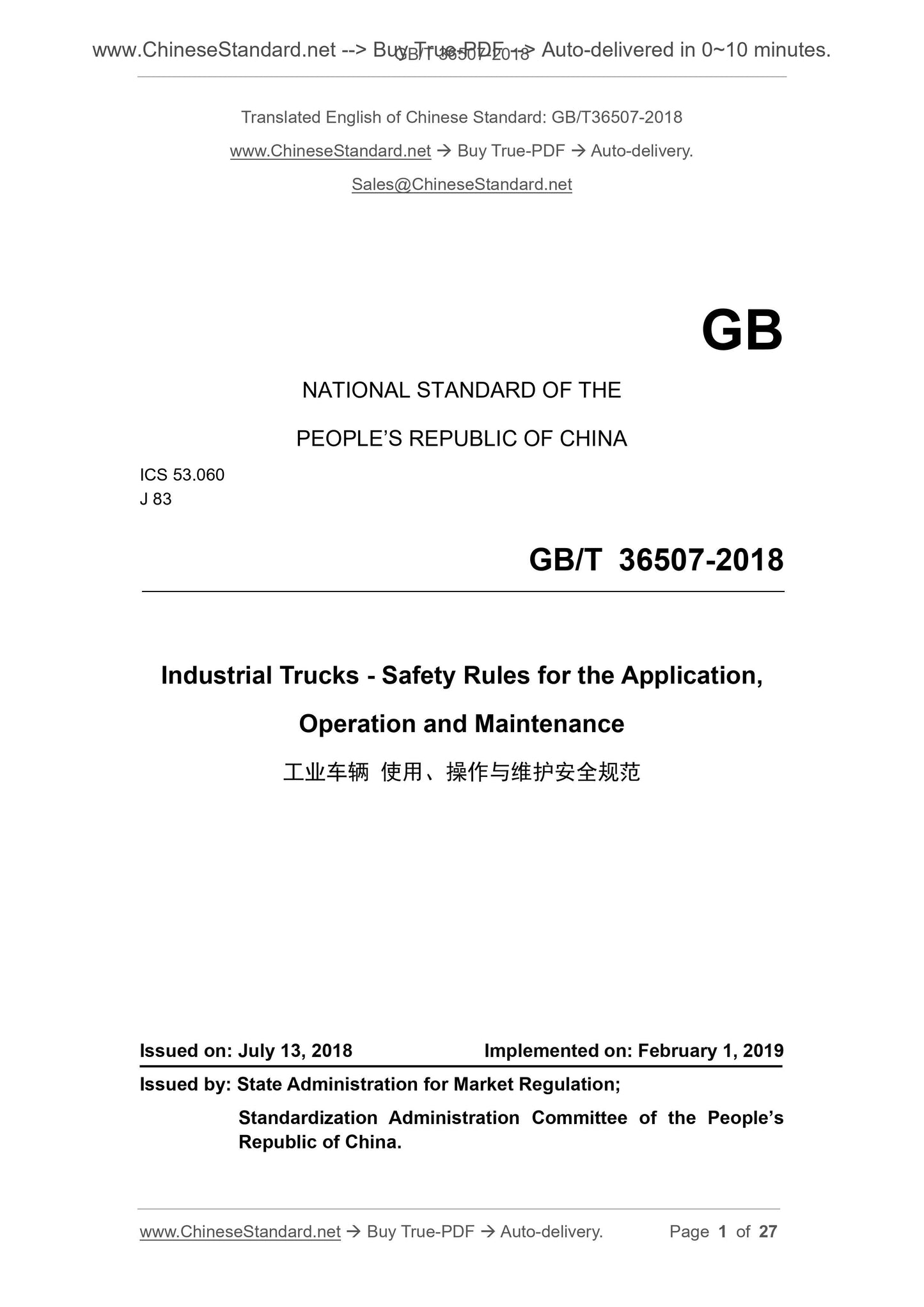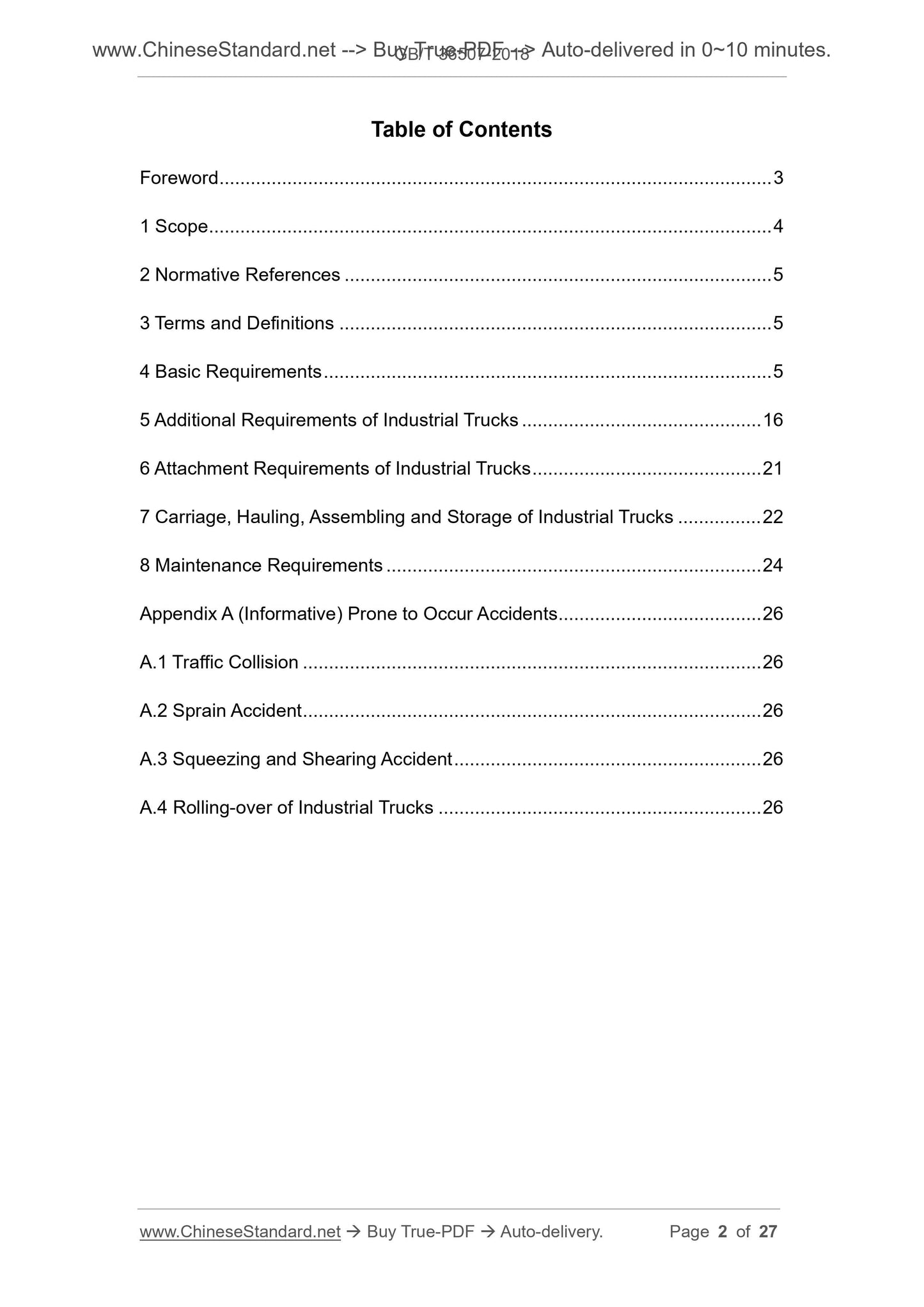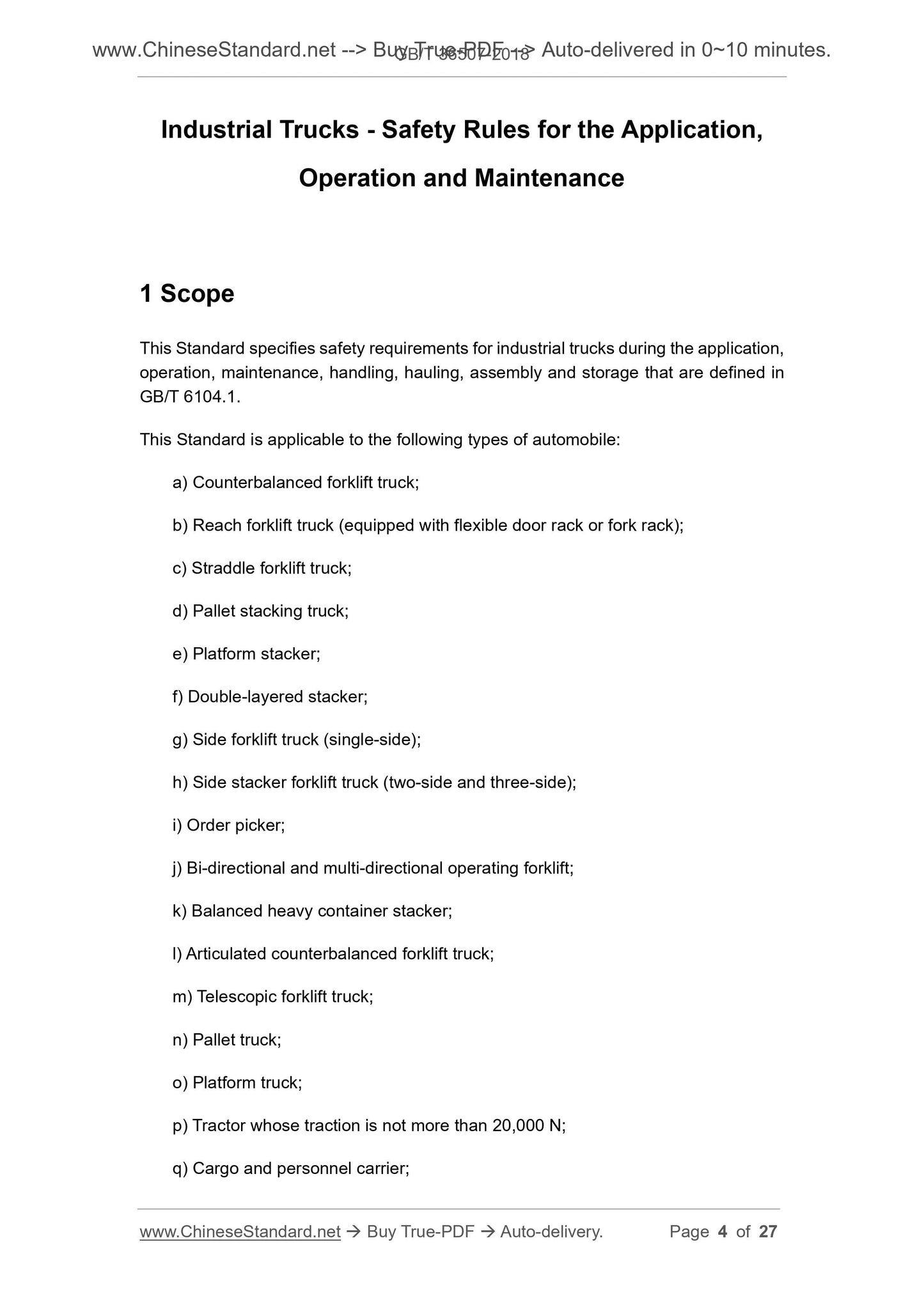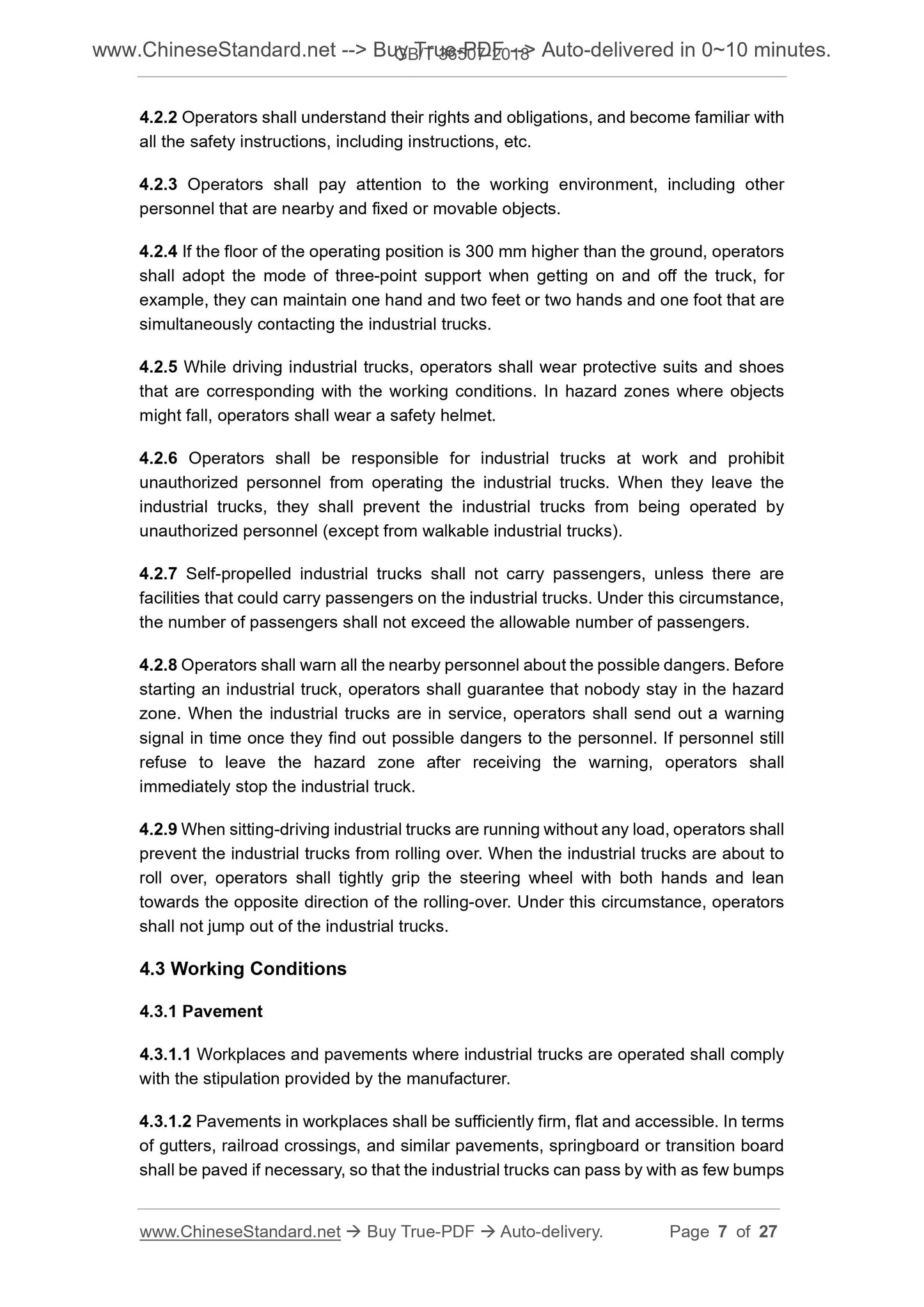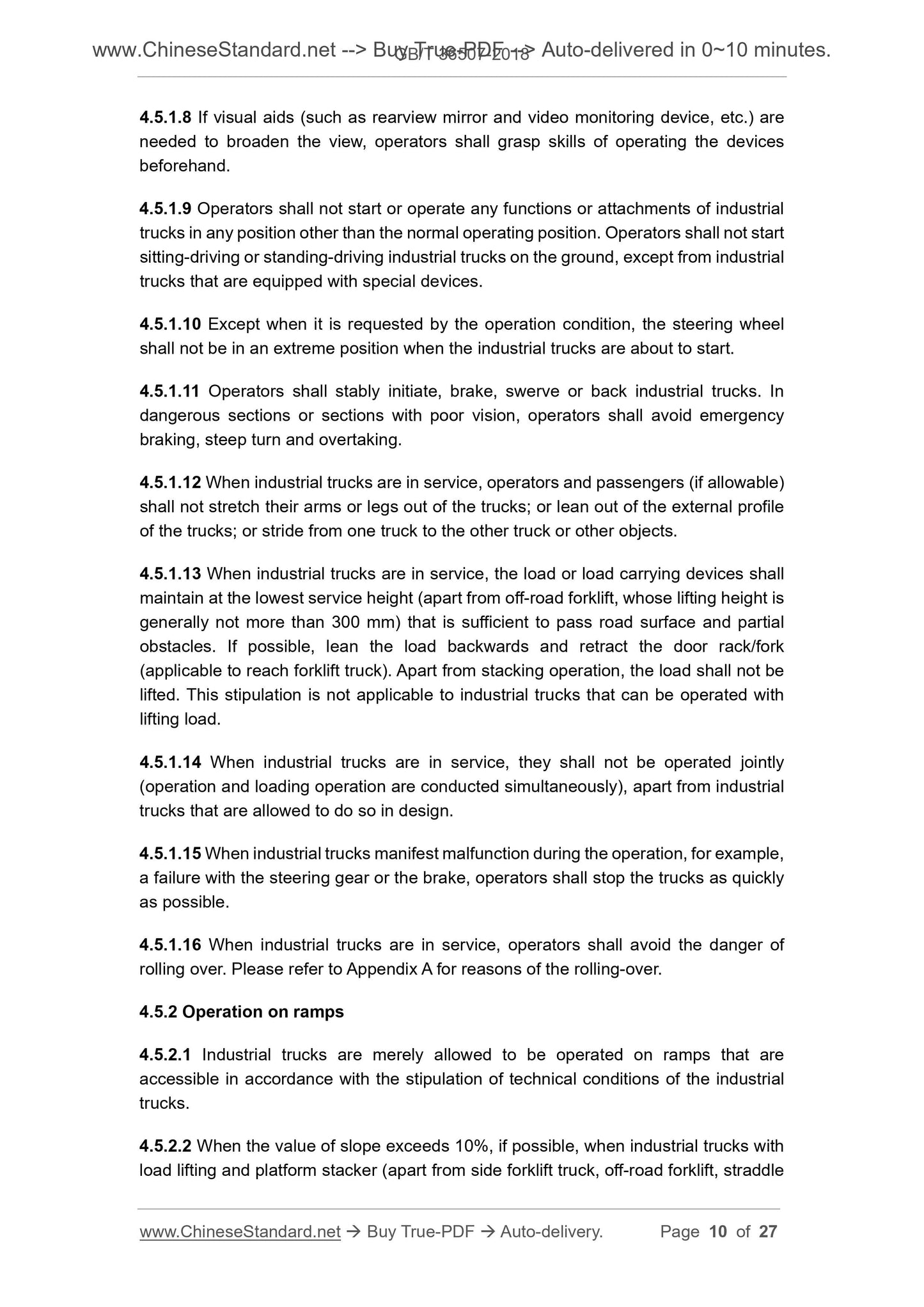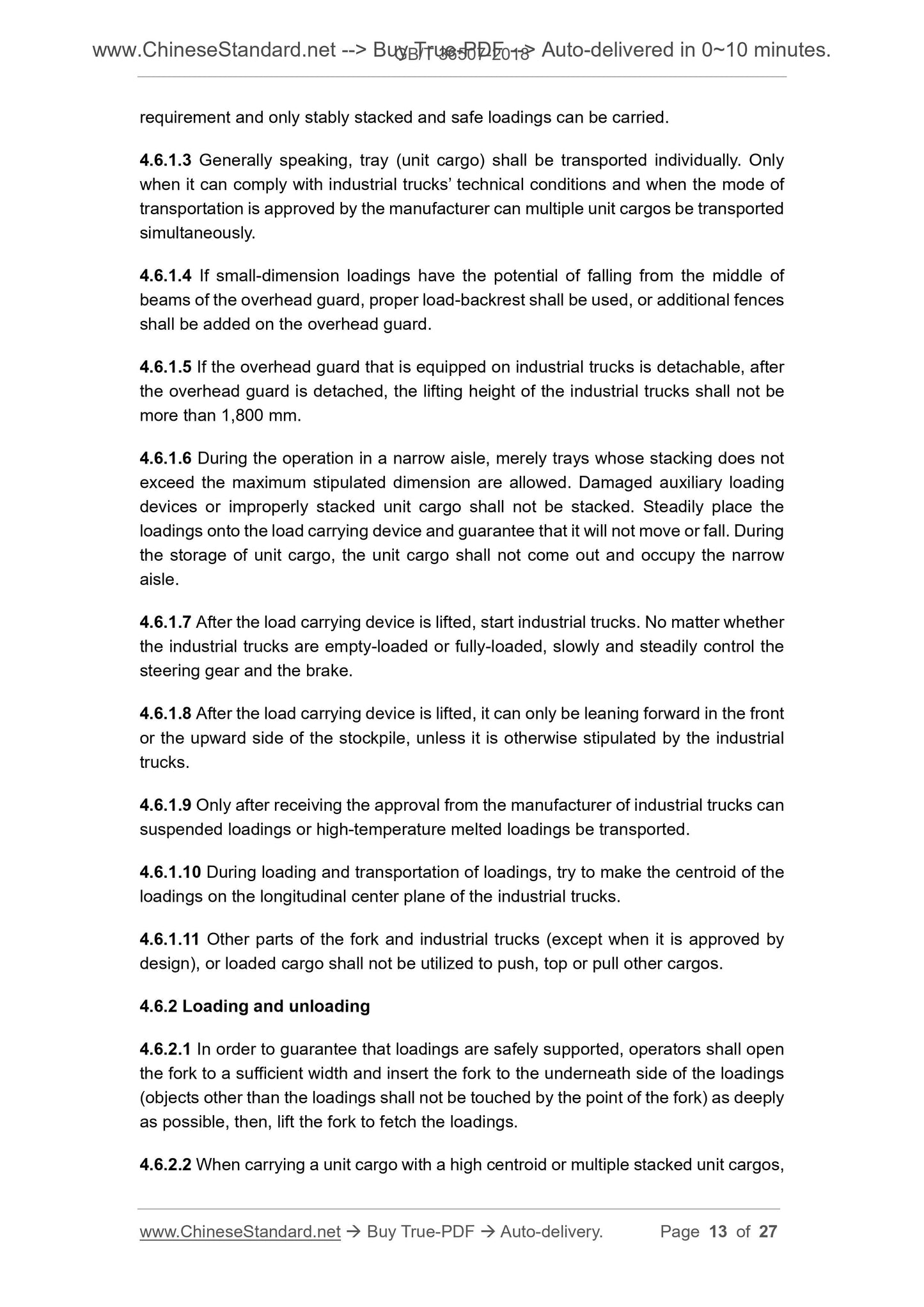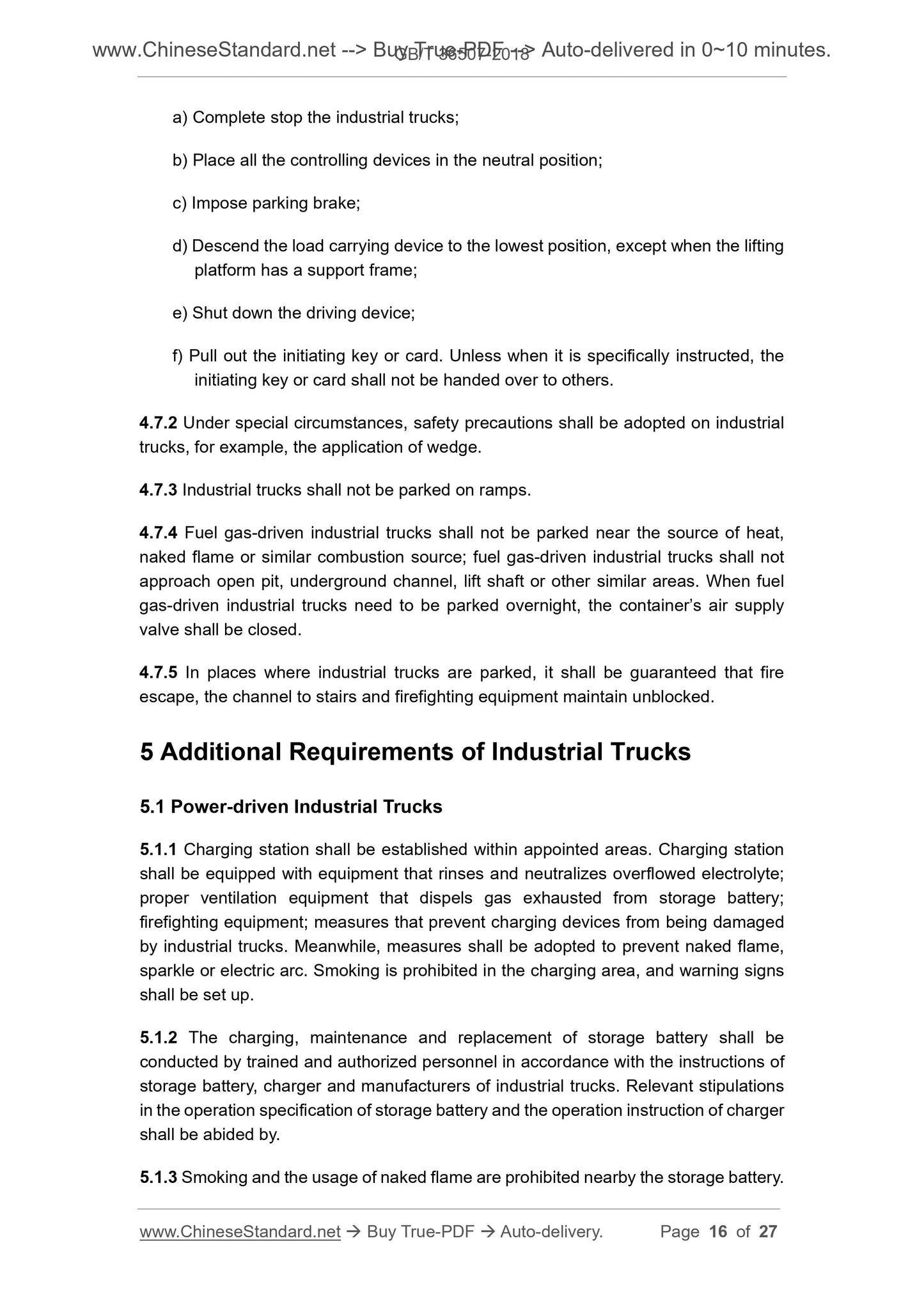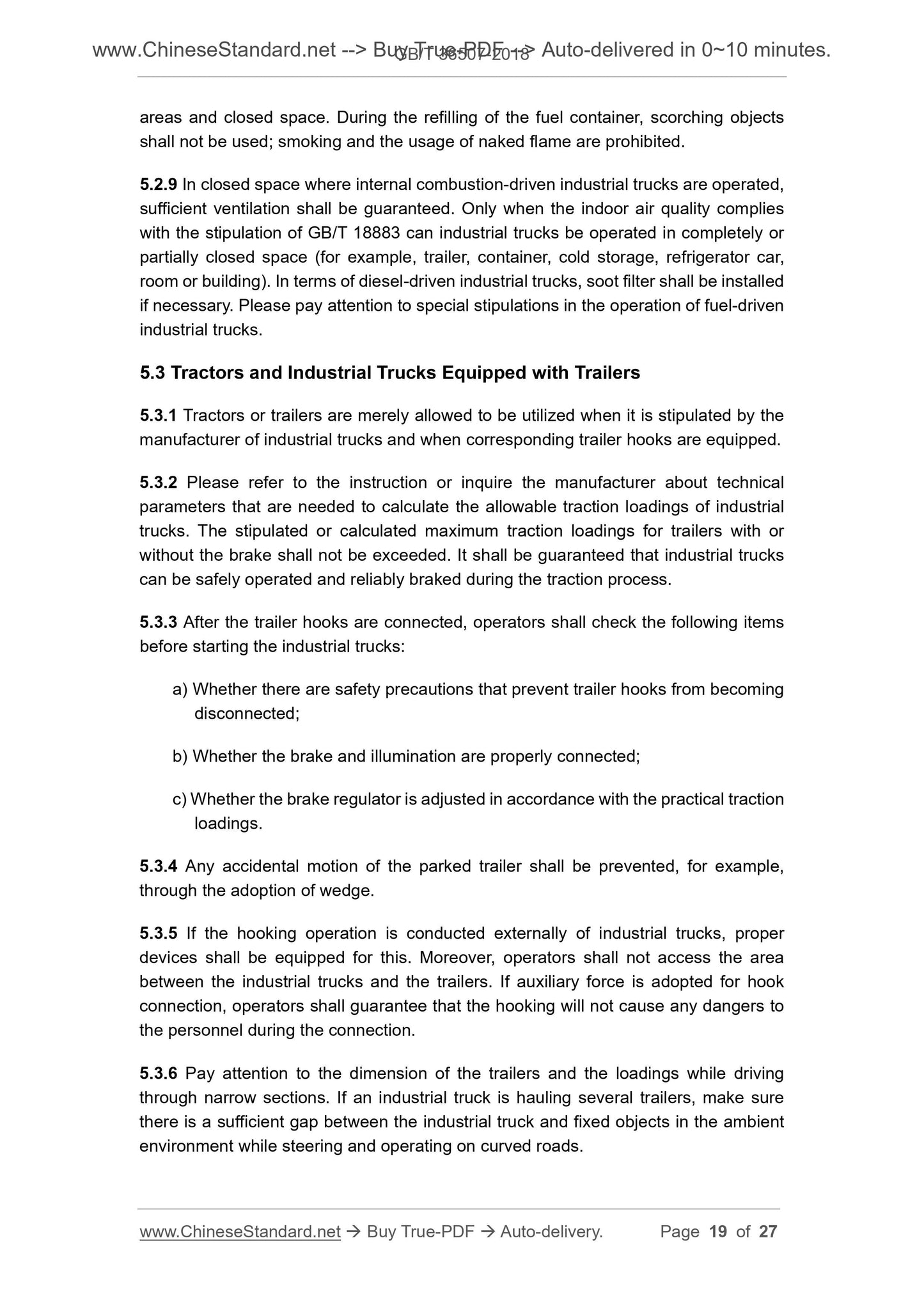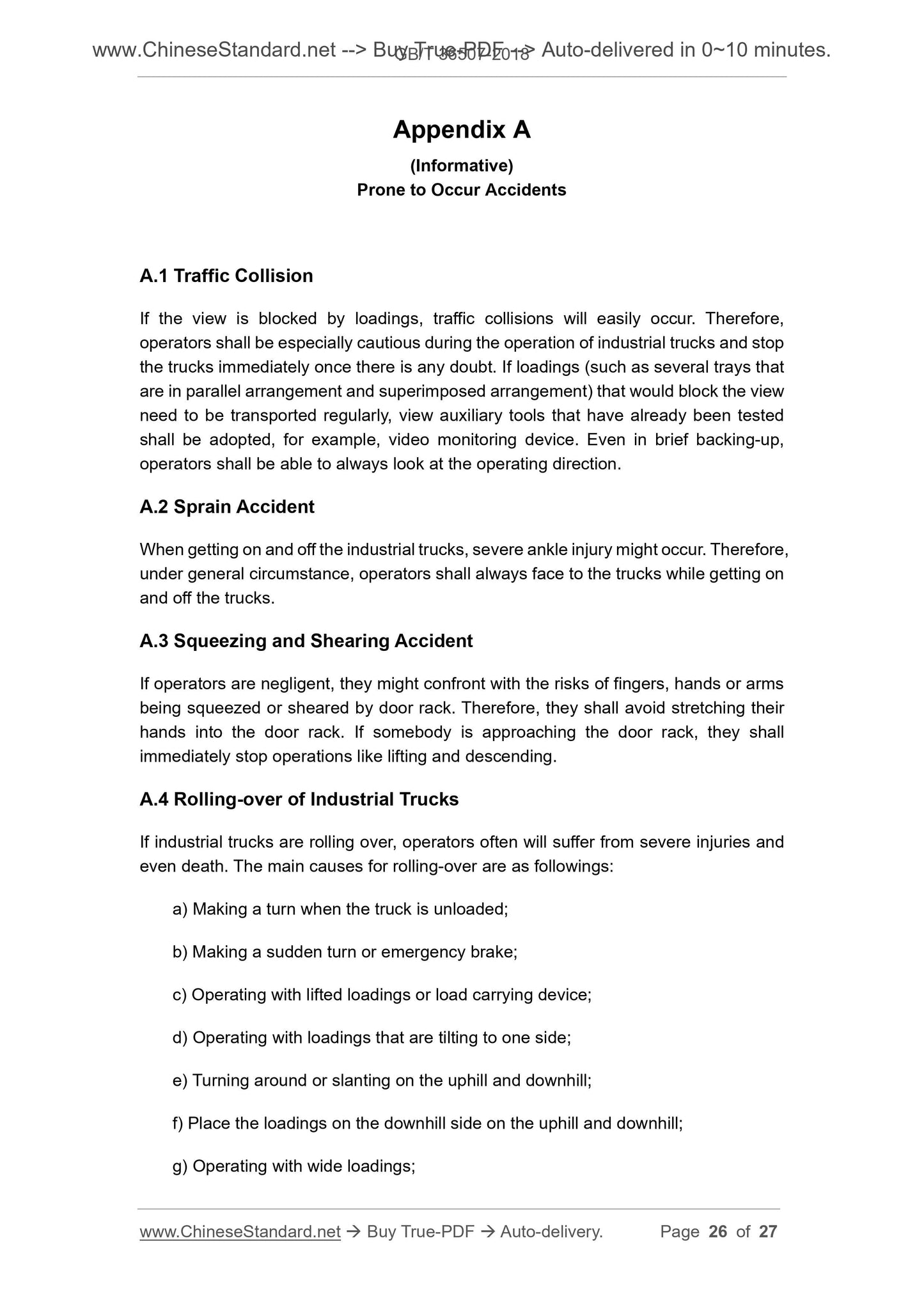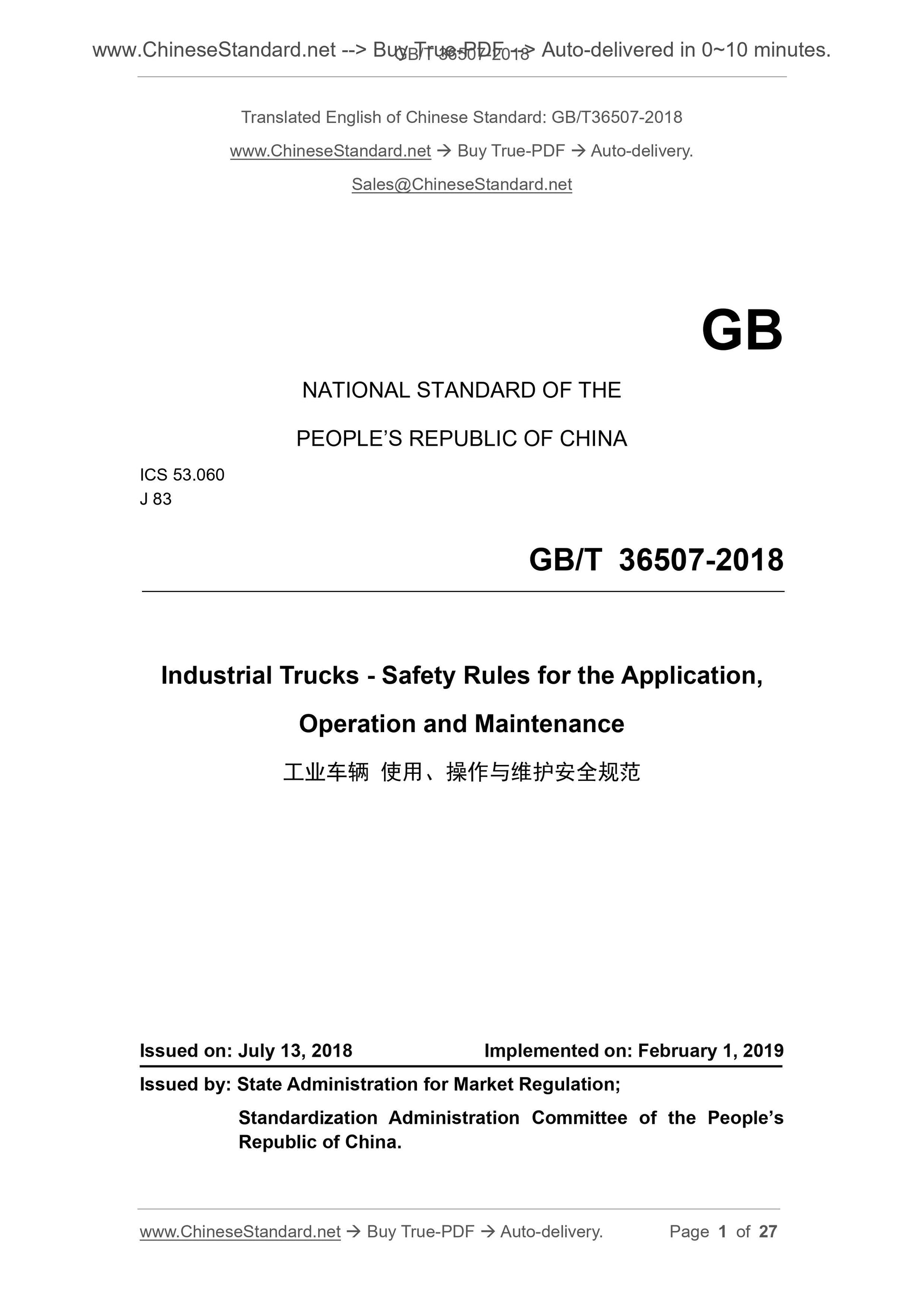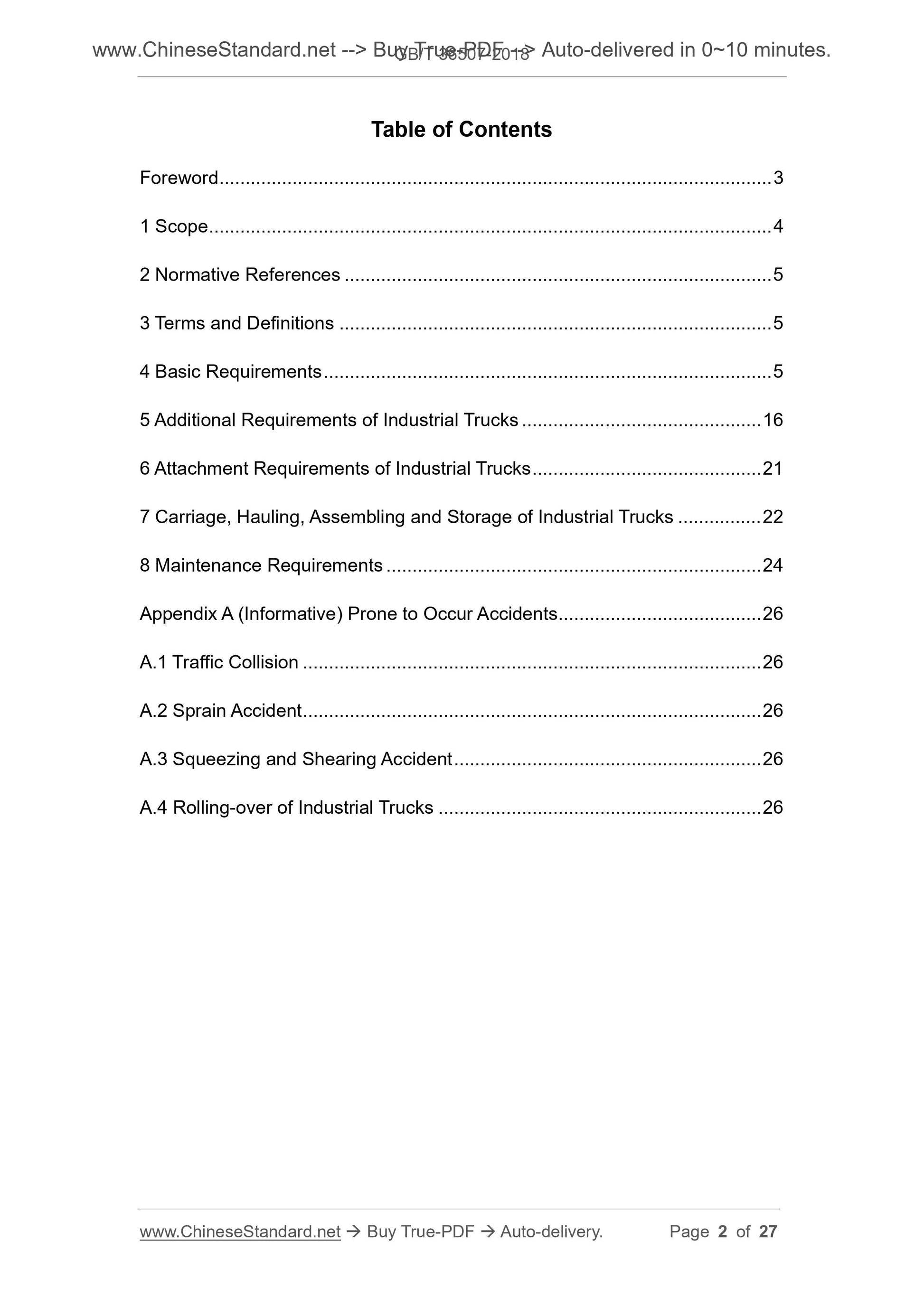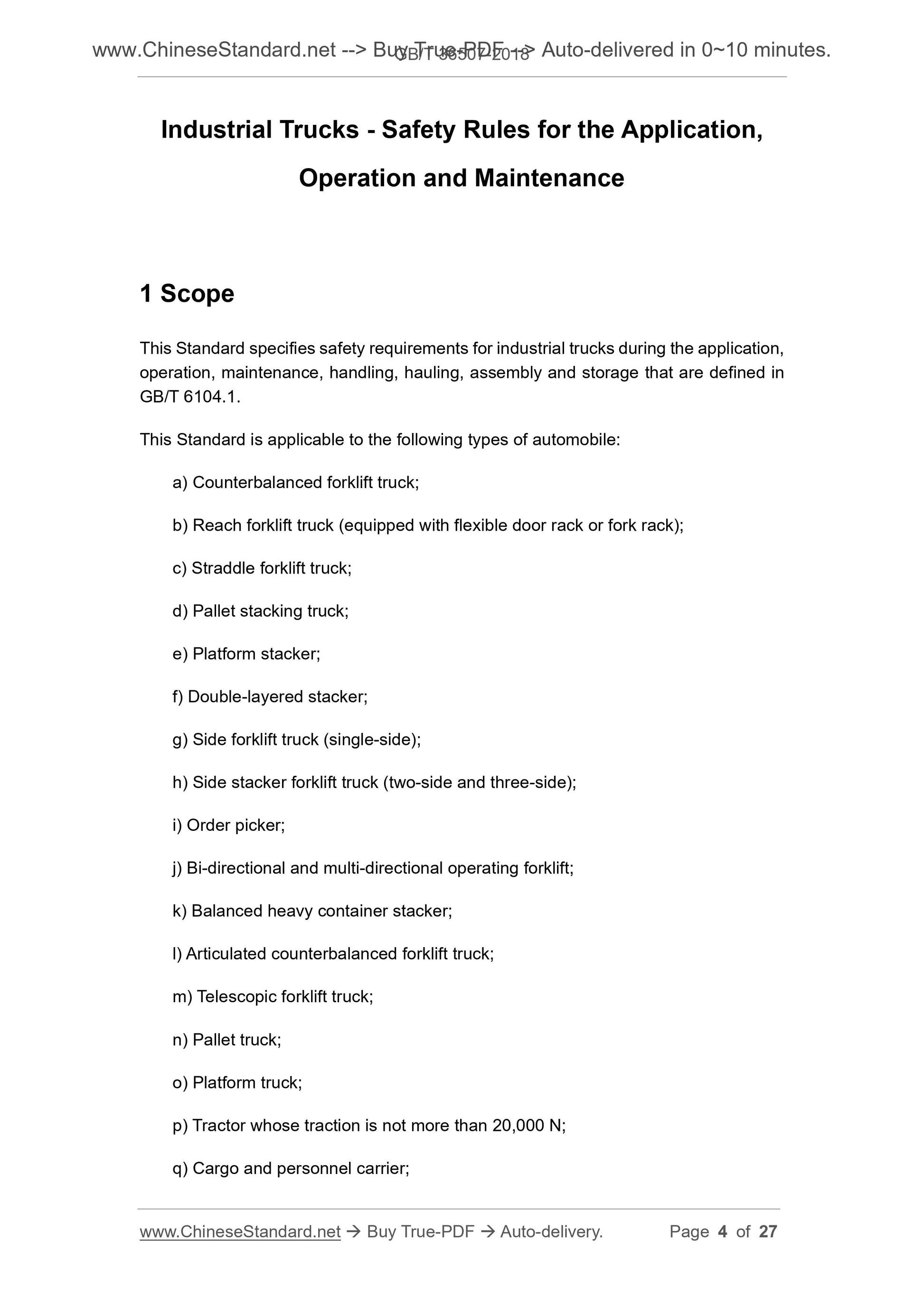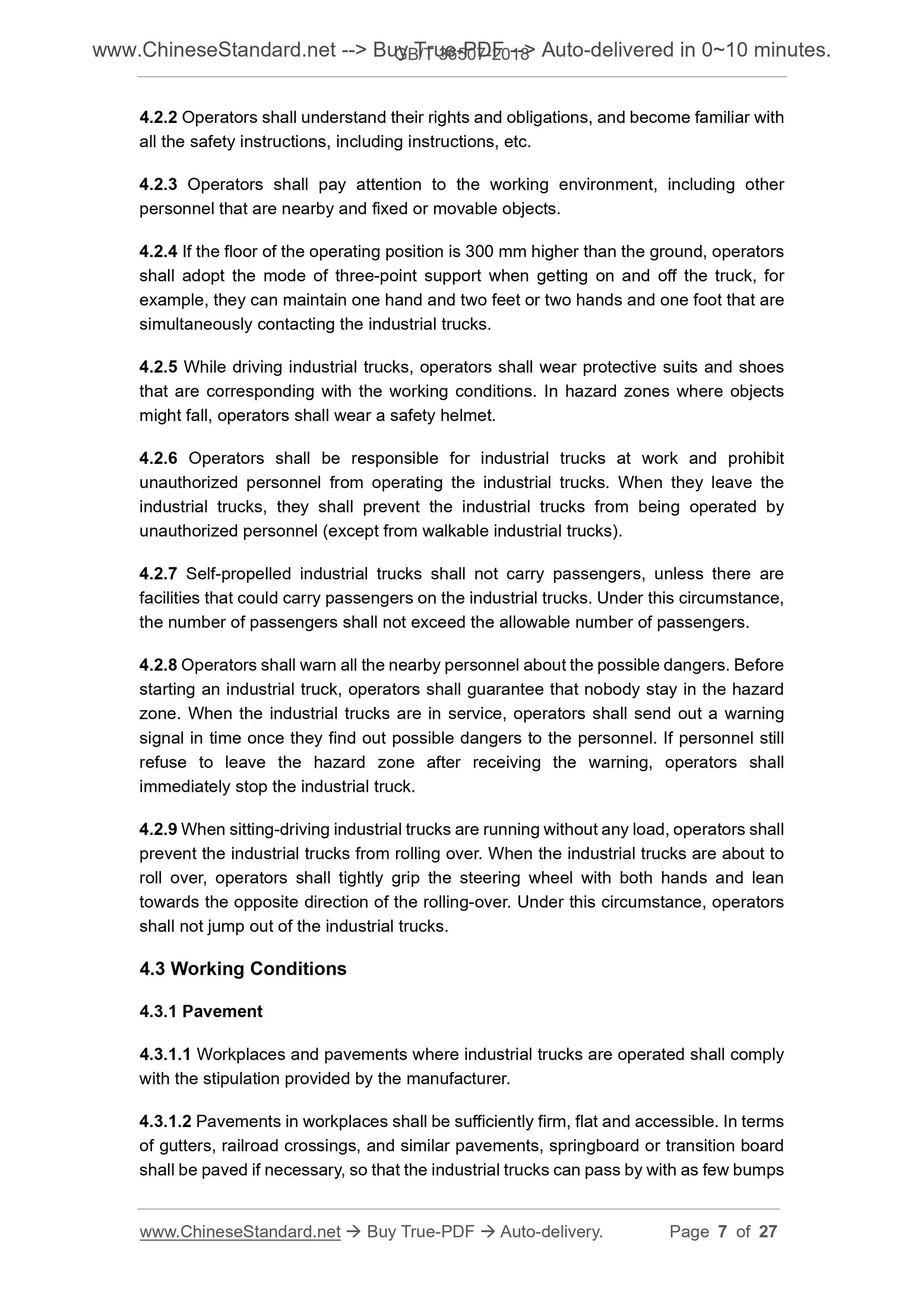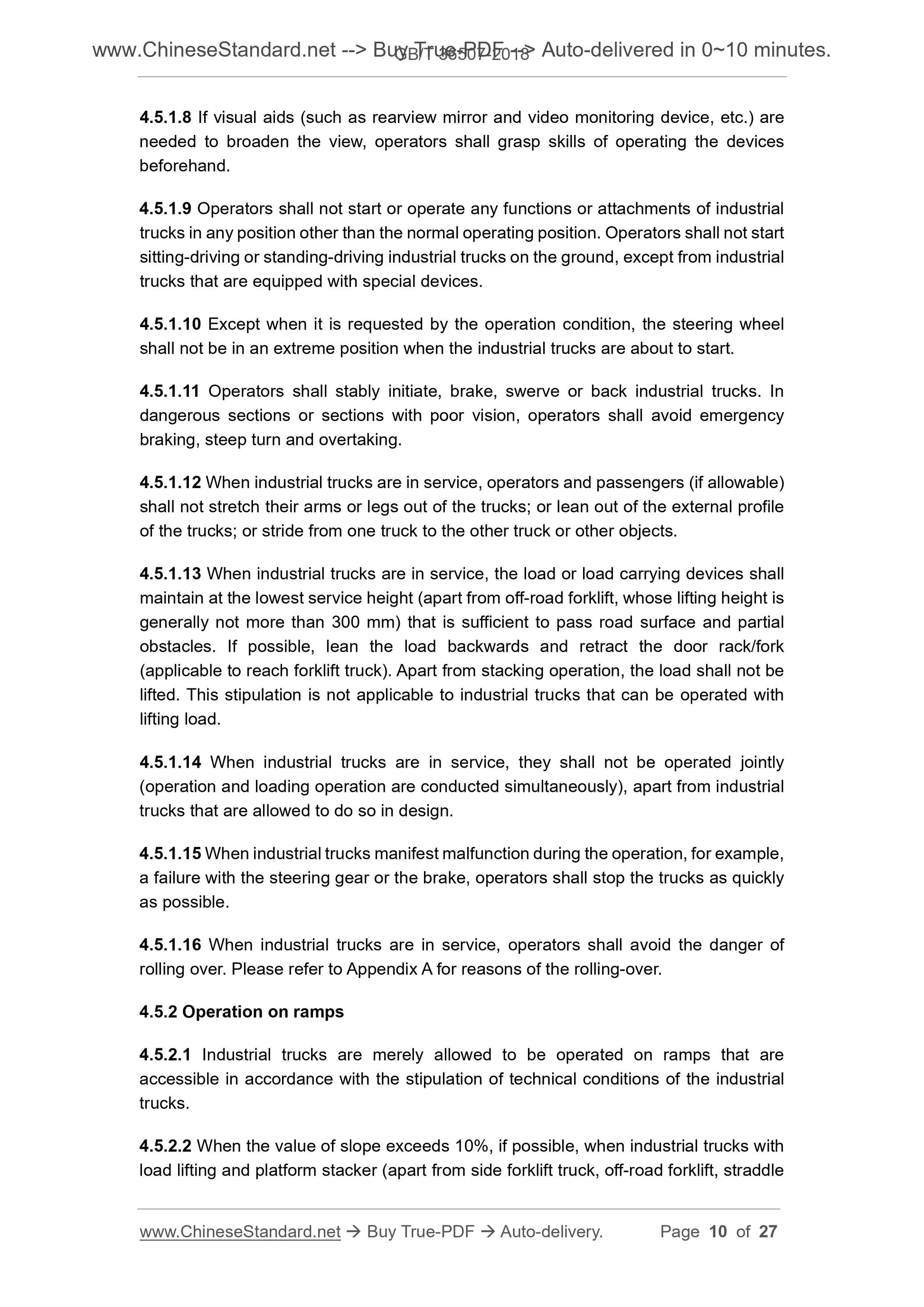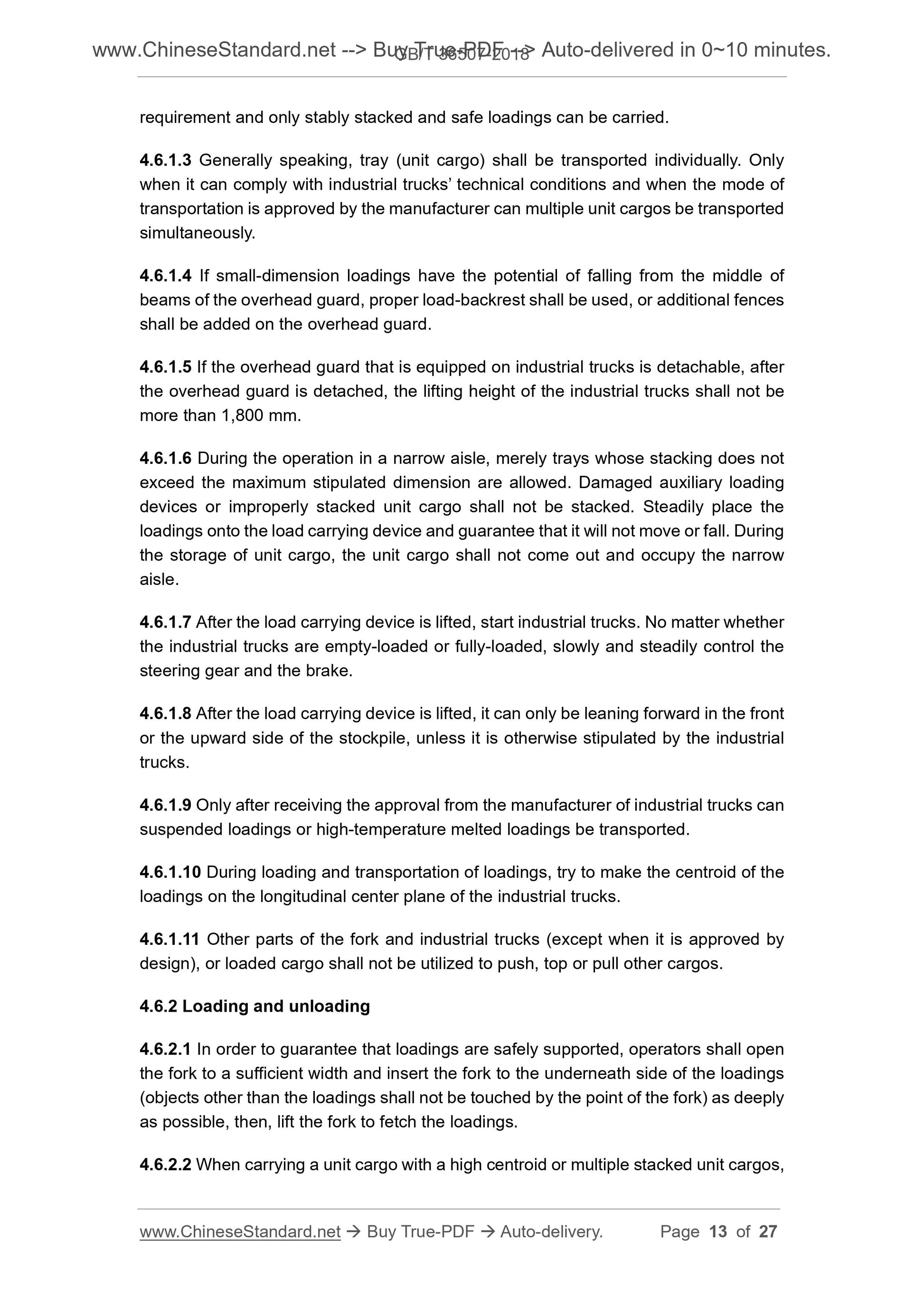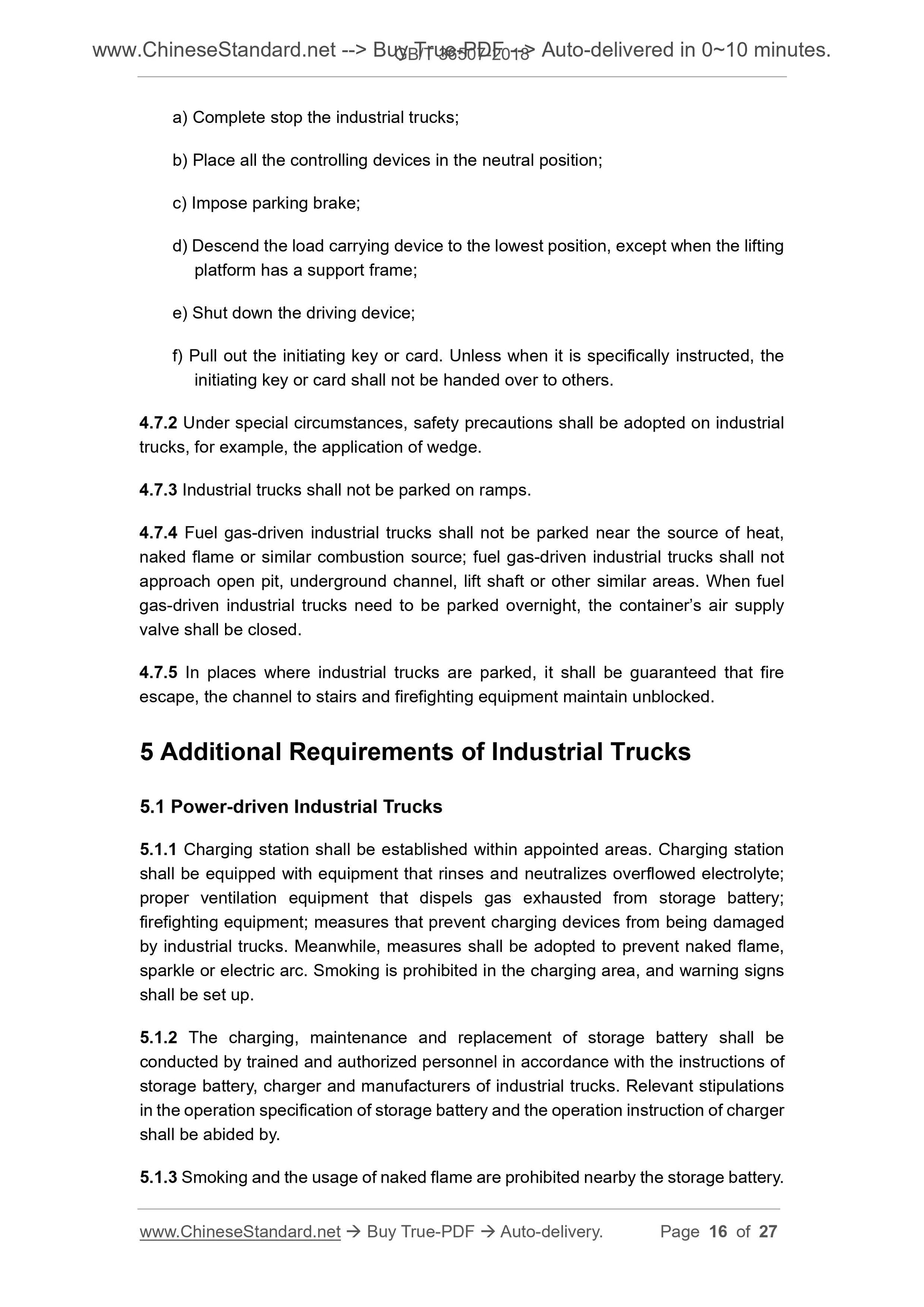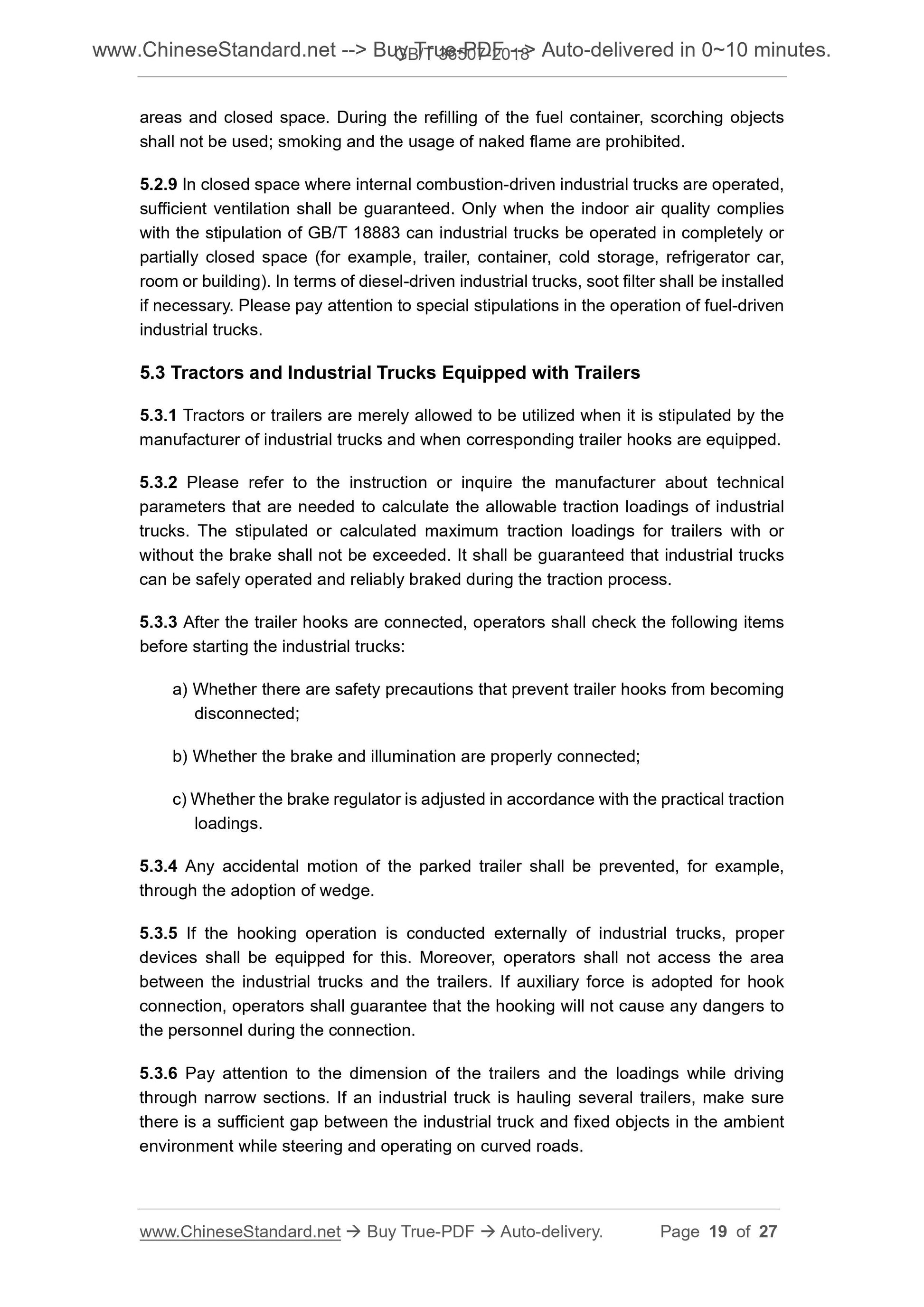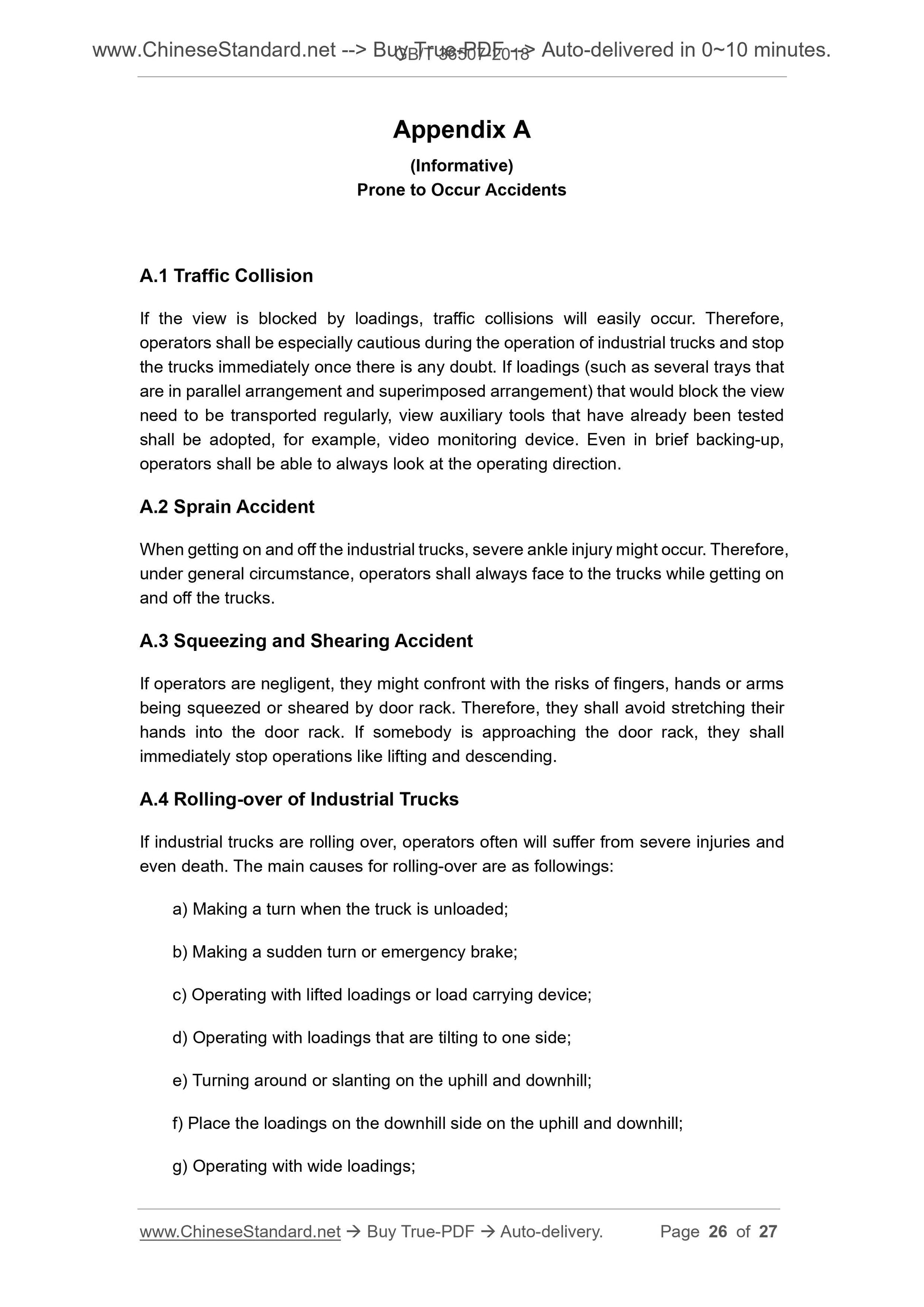1
/
of
9
PayPal, credit cards. Download editable-PDF & invoice In 1 second!
GB/T 36507-2018 English PDF (GB/T36507-2018)
GB/T 36507-2018 English PDF (GB/T36507-2018)
Regular price
$150.00
Regular price
Sale price
$150.00
Unit price
/
per
Shipping calculated at checkout.
Couldn't load pickup availability
GB/T 36507-2018: Industrial trucks -- Safety rules for the application, operation and maintenance
Delivery: 9 seconds. Download (and Email) true-PDF + Invoice.Get Quotation: Click GB/T 36507-2018 (Self-service in 1-minute)
Newer / historical versions: GB/T 36507-2018
Preview True-PDF
Scope
This Standard specifies safety requirements for industrial trucks during the application,operation, maintenance, handling, hauling, assembly and storage that are defined in
GB/T 6104.1.
This Standard is applicable to the following types of automobile.
a) Counterbalanced forklift truck;
b) Reach forklift truck (equipped with flexible door rack or fork rack);
c) Straddle forklift truck;
d) Pallet stacking truck;
e) Platform stacker;
f) Double-layered stacker;
g) Side forklift truck (single-side);
h) Side stacker forklift truck (two-side and three-side);
i) Order picker;
j) Bi-directional and multi-directional operating forklift;
k) Balanced heavy container stacker;
l) Articulated counterbalanced forklift truck;
m) Telescopic forklift truck;
n) Pallet truck;
o) Platform truck;
p) Tractor whose traction is not more than 20,000 N;
q) Cargo and personnel carrier;
4.2.2 Operators shall understand their rights and obligations, and become familiar with
all the safety instructions, including instructions, etc.
4.2.3 Operators shall pay attention to the working environment, including other
personnel that are nearby and fixed or movable objects.
4.2.4 If the floor of the operating position is 300 mm higher than the ground, operators
shall adopt the mode of three-point support when getting on and off the truck, for
example, they can maintain one hand and two feet or two hands and one foot that are
simultaneously contacting the industrial trucks.
4.2.5 While driving industrial trucks, operators shall wear protective suits and shoes
that are corresponding with the working conditions. In hazard zones where objects
might fall, operators shall wear a safety helmet.
4.2.6 Operators shall be responsible for industrial trucks at work and prohibit
unauthorized personnel from operating the industrial trucks. When they leave the
industrial trucks, they shall prevent the industrial trucks from being operated by
unauthorized personnel (except from walkable industrial trucks).
4.2.7 Self-propelled industrial trucks shall not carry passengers, unless there are
facilities that could carry passengers on the industrial trucks. Under this circumstance,
the number of passengers shall not exceed the allowable number of passengers.
4.2.8 Operators shall warn all the nearby personnel about the possible dangers. Before
starting an industrial truck, operators shall guarantee that nobody stay in the hazard
zone. When the industrial trucks are in service, operators shall send out a warning
signal in time once they find out possible dangers to the personnel. If personnel still
refuse to leave the hazard zone after receiving the warning, operators shall
immediately stop the industrial truck.
4.2.9 When sitting-driving industrial trucks are running without any load, operators shall
prevent the industrial trucks from rolling over. When the industrial trucks are about to
roll over, operators shall tightly grip the steering wheel with both hands and lean
towards the opposite direction of the rolling-over. Under this circumstance, operators
shall not jump out of the industrial trucks.
4.3 Working Conditions
4.3.1 Pavement
4.3.1.1 Workplaces and pavements where industrial trucks are operated shall comply
with the stipulation provided by the manufacturer.
4.3.1.2 Pavements in workplaces shall be sufficiently firm, flat and accessible. In terms
of gutters, railroad crossings, and similar pavements, springboard or transition board
shall be paved if necessary, so that the industrial trucks can pass by with as few bumps
4.5.1.8 If visual aids (such as rearview mirror and video monitoring device, etc.) are
needed to broaden the view, operators shall grasp skills of operating the devices
beforehand.
4.5.1.9 Operators shall not start or operate any functions or attachments of industrial
trucks in any position other than the normal operating position. Operators shall not start
sitting-driving or standing-driving industrial trucks on the ground, except from industrial
trucks that are equipped with special devices.
4.5.1.10 Except when it is requested by the operation condition, the steering wheel
shall not be in an extreme position when the industrial trucks are about to start.
4.5.1.11 Operators shall stably initiate, brake, swerve or back industrial trucks. In
dangerous sections or sections with poor vision, operators shall avoid emergency
braking, steep turn and overtaking.
4.5.1.12 When industrial trucks are in service, operators and passengers (if allowable)
shall not stretch their arms or legs out of the trucks; or lean out of the external profile
of the trucks; or stride from one truck to the other truck or other objects.
4.5.1.13 When industrial trucks are in service, the load or load carrying devices shall
maintain at the lowest service height (apart from off-road forklift, whose lifting height is
generally not more than 300 mm) that is sufficient to pass road surface and partial
obstacles. If possible, lean the load backwards and retract the door rack/fork
(applicable to reach forklift truck). Apart from stacking operation, the load shall not be
lifted. This stipulation is not applicable to industrial trucks that can be operated with
lifting load.
4.5.1.14 When industrial trucks are in service, they shall not be operated jointly
(operation and loading operation are conducted simultaneously), apart from industrial
trucks that are allowed to do so in design.
4.5.1.15 When industrial trucks manifest malfunction during the operation, for example,
a failure with the steering gear or the brake, operators shall stop the trucks as quickly
as possible.
4.5.1.16 When industrial trucks are in service, operators shall avoid the danger of
rolling over. Please refer to Appendix A for reasons of the rolling-over.
4.5.2 Operation on ramps
4.5.2.1 Industrial trucks are merely allowed to be operated on ramps that are
accessible in accordance with the stipulation of technical conditions of the industrial
trucks.
4.5.2.2 When the value of slope exceeds 10%, if possible, when industrial trucks with
load lifting and platform stacker (apart from side forklift truck, off-road forklift, straddle
requirement and only stably stacked and safe loadings can be carried.
4.6.1.3 Generally speaking, tray (unit cargo) shall be transported individually. Only
when it can comply with industrial trucks’ technical conditions and when the mode of
transportation is approved by the manufacturer can multiple unit cargos be transported
simultaneously.
4.6.1.4 If small-dimension loadings have the potential of falling from the middle of
beams of the overhead guard, proper load-backrest shall be used, or additional fences
shall be added on the overhead guard.
4.6.1.5 If the overhead guard that is equipped on industrial trucks is detachable, after
the overhead guard is detached, the lifting height of the industrial trucks shall not be
more than 1,800 mm.
4.6.1.6 During the operation in a narrow aisle, merely trays whose stacking does not
exceed the maximum stipulated dimension are allowed. Damaged auxiliary loading
devices or improperly stacked unit cargo shall not be stacked. Steadily place the
loadings onto the load carrying device and guarantee that it will not move or fall. During
the storage of unit cargo, the unit cargo shall not come out and occupy the narrow
aisle.
4.6.1.7 After the load carrying device is lifted, start industrial trucks. No matter whether
the industrial trucks are empty-loaded or fully-loaded, slowly and steadily control the
steering gear and the brake.
4.6.1.8 After the load carrying device is lifted, it can only be leaning forward in the front
or the upward side of the stockpile, unless it is otherwise stipulated by the industrial
trucks.
4.6.1.9 Only after receiving the approval from the manufacturer of industrial trucks can
suspended loadings or high-temperature melted loadings be transported.
4.6.1.10 During loading and transportation of loadings, try to make the centroid of the
loadings on the longitudinal center plane of the industrial trucks.
4.6.1.11 Other parts of the fork and industrial trucks (except when it is approved by
design), or loaded cargo shall not be utilized to push, top or pull other cargos.
4.6.2 Loading and unloading
4.6.2.1 In order to guarantee that loadings are safely supported, operators shall open
the fork to a sufficient width and insert the fork to the underneath side of the loadings
(objects other than the loadings shall not be touched by the point of the fork) as deeply
as possible, then, lift the fork to fetch the loadings.
4.6.2.2 When carrying a unit cargo with a high centroid or multiple stacked unit cargos,
a) Complete stop the industrial trucks;
b) Place all the controlling devices in the neutral position;
c) Impose parking brake;
d) Descend the load carrying device to the lowest position, except when the lifting
platform has a support frame;
e) Shut down the driving device;
f) Pull out the initiating key or card. Unless when it is specifically instructed, the
initiating key or card shall not be handed over to others.
4.7.2 Under special circumstances, safety precautions shall be adopted on industrial
trucks, for example, the application of wedge.
4.7.3 Industrial trucks shall not be parked on ramps.
4.7.4 Fuel gas-driven industrial trucks shall not be parked near the source of heat,
naked flame or similar combustion source; fuel gas-driven industrial trucks shall not
approach open pit, underground channel, lift shaft or other similar areas. When fuel
gas-driven industrial trucks need to be parked overnight, the container’s air supply
valve shall be closed.
4.7.5 In places where industrial trucks are parked, it shall be guaranteed that fire
escape, the channel to stairs and firefighting equipment maintain unblocked.
Basic Data
| Standard ID | GB/T 36507-2018 (GB/T36507-2018) |
| Description (Translated English) | Industrial trucks -- Safety rules for the application, operation and maintenance |
| Sector / Industry | National Standard (Recommended) |
| Classification of Chinese Standard | J83 |
| Classification of International Standard | 53.060 |
| Word Count Estimation | 18,149 |
| Date of Issue | 2018-07-13 |
| Date of Implementation | 2019-02-01 |
| Issuing agency(ies) | State Administration for Market Regulation, China National Standardization Administration |
Share
